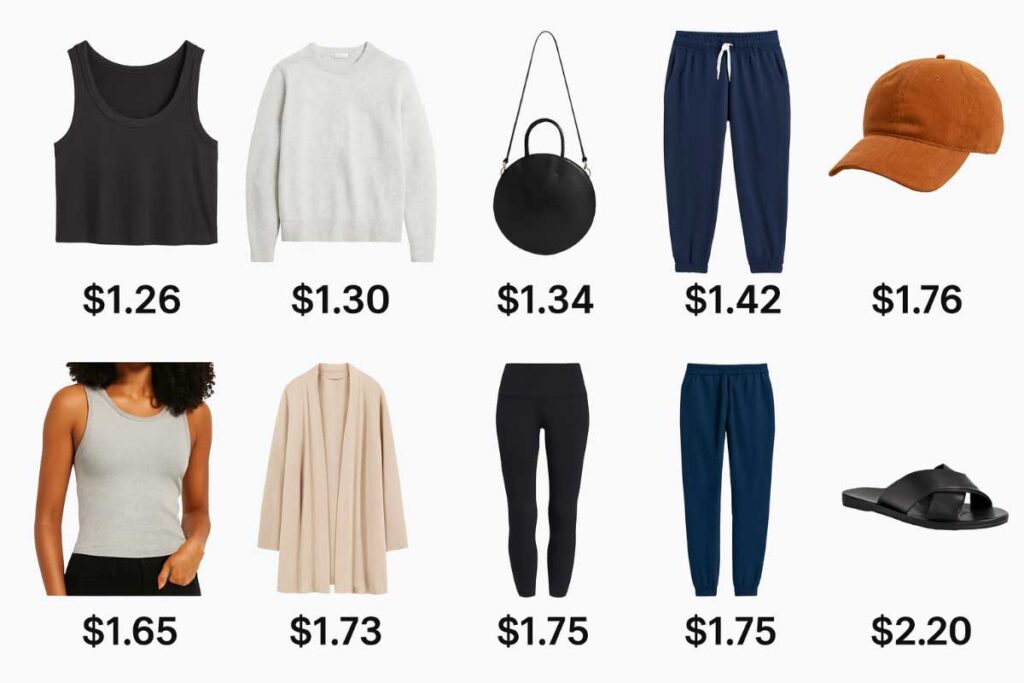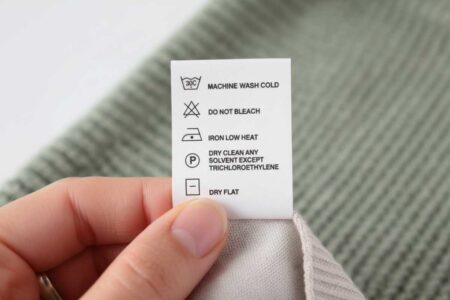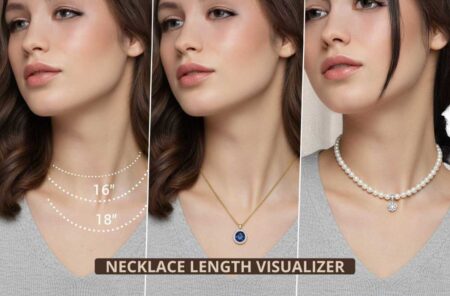Capsule Wardrobe Cost Per Wear
Enter an item's price, how often you will wear it each month, and how many months you will keep it. We will calculate your cost per wear and show breakeven against a cheaper option.
Developer self tests
I use this capsule wardrobe cost per wear calculator any time I’m eyeing a splurge. Pick your currency, add the price, how often you’ll wear it each month, and how long you’ll keep it, then hit Calculate. You’ll see cost per wear, and if you open Compare, a breakeven against a cheaper option.
Next, make sure you’ll actually wear it
Lock the fit so those wears happen. Find your bra size, convert your clothing size, and compare balconette vs plunge bras. You’ll see Back to cost per wear near the intro on those pages, so you can bounce right back here.
How the calculator works
Enter the price, be honest about wears per month, estimate months you’ll keep it, then copy the result to Notes while you decide.
The quick math
Cost per wear is just price divided by total wears.
CPW = price / (wears_per_month × months_kept)

Five second examples
| Item | Price | Wears/mo | Months | Cost per wear |
|---|---|---|---|---|
| Black boots | $180 | 10 | 24 | $0.75 |
| Occasion dress | $120 | 1 | 6 | $20.00 |
| Wool sweater A | $150 | 8 | 24 | $0.78 |
| Wool sweater B | $60 | 2 | 6 | $5.00 |
Numbers are examples. Use the calculator above for your real totals and your local currency.
A quick story from my closet
Last month I ran a $250 blazer against a $120 dupe. My weekly schedule said 8 wears a month for the blazer and maybe 3 for the dupe. The calculator landed the blazer under a dollar per wear and the dupe over three. I bought the blazer and wore it twice that week.
Breakeven, in plain words
Breakeven is the moment the pricier piece equals or beats the cheaper one on cost per wear. Wear it more, or keep it longer, and you’ll get there faster.
Breakeven when CPW_expensive ≤ CPW_cheaper
Shortcut, months to breakeven when both items get the same wears per month
months = price_difference / (wears_per_month × CPW_cheaper)
Example
Coat A is $300, Coat B is $180, both worn 8 times a month. If Coat B’s CPW target is about $180 ÷ (8 × 24) = $0.94, then months to breakeven is roughly (300 − 180) ÷ (8 × 0.94) ≈ 16. Wear Coat A for 16 months and it catches up.
What counts as a good cost per wear
Everyday basics under a dollar is a win. Coats, boots, and blazers often feel great at one to three. Occasion pieces feel smart under ten, or your local currency equivalent. Your numbers will shift by climate and lifestyle. The calculator makes the trade visible.
Estimating wears and lifespan, a quick cheat sheet
- Jeans 6 to 12 wears a month, 18 to 36 months
- T shirts 8 to 16 wears a month, 12 to 24 months
- Sweaters 4 to 10 wears a month, 18 to 30 months
- Coats 10 to 20 wears a month in season, 36 to 60 months
- Boots 6 to 12 wears a month in season, 24 to 48 months
Start conservative. Track one month of outfits, then update your numbers.
Next steps, finish the decision and keep shopping simple
Calculate cost for your top three contenders in the tool on this page.
Check fit so you actually wear it, find your bra size and balconette vs plunge bras.
Convert sizes when you shop UK or EU labels, convert your size.
You’ll see Back to cost per wear near the intro on those pages for a clean return path.
Tips that keep the math honest
Count real life wears. Add tailoring and cleaning to the price. Track outfits for a month, then recalc. Buy fewer, better, and repeat outfits on purpose. Lower cost per wear is not just cheaper, it’s lower waste. Care well, repair once, and resell or donate when you’re done.
FAQ
What is cost per wear?
Price divided by how many times you’ll wear the item across its lifespan.
How do I pick months kept?
Use your past behavior. Basics live longer than trend pieces. Start conservative.
Should I count care costs?
Yes. Add tailoring or cleaning to the price before you calculate.
Can a pricier item be the smarter buy?
Often yes, if you’ll wear it more or keep it longer. The calculator makes that visible.
What if my numbers change?
Recalculate after a month. If the cost per wear drops fast, you made a good call.
Try it now
Plug in the price, how often you’ll wear it each month, and how long you’ll keep it. Calculate, compare if you’re debating, copy the result, and buy the piece that will actually earn its keep.
More on Blufashion
- How do I calculate my jeans size?
- Ring Size Finder, measure at home
- Swimsuit Size Chart and Support Picker
- Plus size friendly, inch by inch. See your size
- Between sizes, get a clear pick with the Hat Size Calculator





